A coat of arms is a heraldic visual design on an escutcheon, surcoat, or tabard. The coat of arms on an escutcheon forms the central element of the full heraldic achievement, which in its whole consists of a shield, supporters, a crest, and a motto. A coat of arms is traditionally unique to the armiger. The term "coat of arms" itself, describing in modern times just the heraldic design, originates from the description of the entire medieval chainmail "surcoat" garment used in combat or preparation for the latter.

Leinster House is the seat of the Oireachtas, the parliament of Ireland. Originally, it was the ducal palace of the Dukes of Leinster.
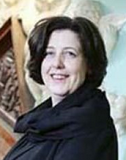
The Genealogical Office is an office of the Government of Ireland containing genealogical records. It includes the Office of the Chief Herald of Ireland, the authority in Ireland for heraldry. The Chief Herald authorises the granting of arms to Irish bodies and Irish people, including descendants of emigrants. The office was constituted on 1 April 1943 as successor to the Ulster King of Arms, established during the Tudor period of the Kingdom of Ireland in 1552. The Ulster King of Arms' duties in relation to Northern Ireland were taken over by the Norroy and Ulster King of Arms.

The Most Illustrious Order of Saint Patrick is a dormant British order of chivalry associated with Ireland. The Order was created in 1783 by King George III at the request of the then Lord Lieutenant of Ireland, The 3rd Earl Temple. The regular creation of knights of the Order lasted until 1922, when most of Ireland gained independence as the Irish Free State, a dominion within what was then known as the British Commonwealth of Nations. While the Order technically still exists, no knight of St Patrick has been created since 1936, and the last surviving knight, Prince Henry, Duke of Gloucester, died in 1974. Charles III, however, remains the Sovereign of the Order, and one officer, the Ulster King of Arms, also survives. St Patrick is patron of the order; its motto is Quis separabit?, Latin for "Who will separate [us]?": an allusion to the Vulgate translation of Romans 8:35, "Who shall separate us from the love of Christ?"

State Library Victoria (SLV) is the state library of Victoria, Australia. Located in Melbourne, it was established in 1854 as the Melbourne Public Library, making it Australia's oldest public library and one of the first free libraries in the world. It is also Australia's busiest public library and, as of 2023, the third busiest library globally.

The National Museum of Ireland is Ireland's leading museum institution, with a strong emphasis on national and some international archaeology, Irish history, Irish art, culture, and natural history. It has three branches in Dublin, the archaeology and natural history museums adjacent on Kildare Street and Merrion Square, and a newer Decorative Arts and History branch at the former Collins Barracks, and the Country Life museum in County Mayo.
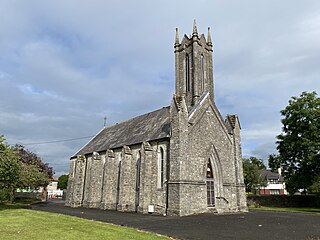
Newbridge, officially known by its Irish name Droichead Nua, is a town in County Kildare, Ireland. While the nearby Great Connell Priory was founded in the 13th century, the town itself formed from the 18th century onwards, and grew rapidly alongside a military barracks which opened in the early 19th century. Taking on the name Newbridge in the 20th century, the town expanded to support the local catchment, and also as a commuter town for Dublin. Doubling in population during the 20 years between 1991 and 2011, its population of 24,366 in 2022 makes it the second largest town in Kildare and the sixteenth-largest in Ireland.

The National Library of Ireland is Ireland's national library located in Dublin, in a building designed by Thomas Newenham Deane. The mission of the National Library of Ireland is "To collect, preserve, promote and make accessible the documentary and intellectual record of the life of Ireland and to contribute to the provision of access to the larger universe of recorded knowledge."
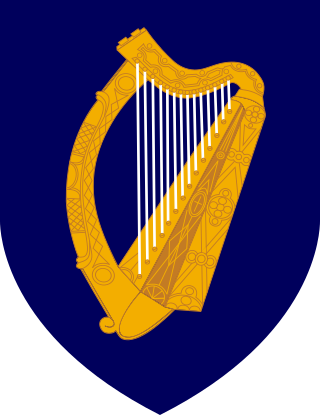
The coat of arms of Ireland is blazoned as Azure a harp Or, stringed Argent. These arms have long been Ireland's heraldic emblem. References to them as being the arms of the king of Ireland can be found as early as the 13th century. These arms were adopted by Henry VIII of England when he ended the period of Lordship of Ireland and declared Ireland to be a kingdom again in 1541. When the crowns of England, Scotland and Ireland were united in 1603, they were integrated into the unified royal coat of arms of kingdoms of England, Scotland and Ireland. The harp was adopted as the emblem of the Irish Free State when it separated from the United Kingdom in 1922. They were registered as the arms of Ireland with the Chief Herald of Ireland on 9 November 1945.
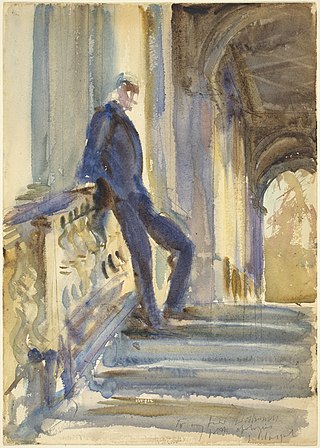
Major Sir Nevile Rodwell Wilkinson, KCVO was a British officer of arms, British Army officer, author and a dollhouse designer.

The Bureau of Heraldry is the South African heraldic authority, established in Pretoria on 1 June 1963. It is headed by a State Herald and its functions are to register arms, badges, flags and seals, to keep a public register, to issue registration certificates and, since 1980, to advise the government on heraldic matters. Together with the Heraldry Council, it forms part of the National Archives and Records Service, which is currently under the authority of the Minister of Sports, Arts and Culture.

The National Museum of Ireland – Natural History, sometimes called the Dead Zoo, a branch of the National Museum of Ireland, is housed on Merrion Street in Dublin, Ireland. The museum was built in 1856 for parts of the collection of the Royal Dublin Society and the building and collection were later passed to the State.

The Fremantle Arts Centre is a historic building complex on Ord Street in Fremantle, Western Australia.

Kildare Street is a street in Dublin, Ireland.

Ballitore is a village in County Kildare, Ireland, sometimes spelt as Ballytore. It is noted for its historical Quaker associations. It was the first planned Quaker village in either England or Ireland - and remains the only one in Europe.

The National Museum of Ireland – Country Life is located in Turlough village, 8 km (5.0 mi) northeast of Castlebar, County Mayo, Ireland. Established in 2001, the museum is part of the National Museum of Ireland and is the only national museum outside Dublin. The museum exhibits the way of life of rural Irish people between 1850 and 1950, and is in the grounds of Turlough Park House. There are displays about the home, the natural environment, trades and crafts, communities, and working on the land and on water.

Galway City Museum is a museum in Galway City, County Galway, Ireland. It was founded on 29 July 2006, and is located beside the Spanish Arch.

Leixlip is a town in north-east County Kildare, Ireland. Its location on the confluence of the River Liffey and the Rye Water has marked it as a frontier town historically: on the border between the ancient kingdoms of Leinster and Brega, as an outpost of The Pale, and on Kildare's border with County Dublin. Leixlip was also a civil parish in the ancient barony of Salt North.
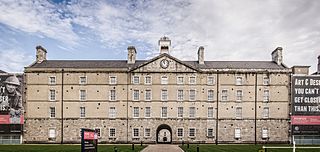
The National Museum of Ireland – Decorative Arts and History is a branch of the National Museum of Ireland (NMI) located at the former Collins Barracks in the Arbour Hill area of Dublin, Ireland.
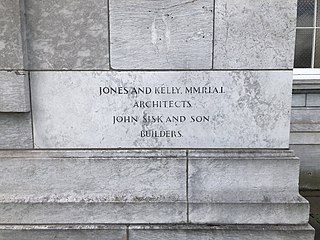
The City Hall, Cork is a civic building in Cork, Ireland which houses the administrative headquarters of Cork City Council.




















